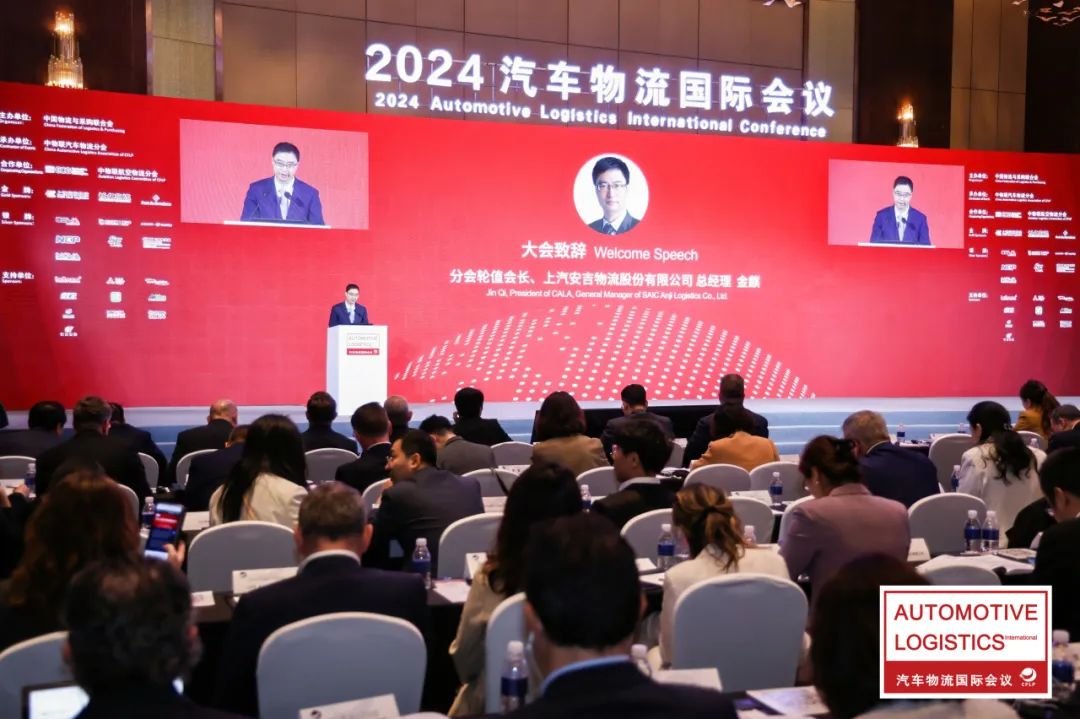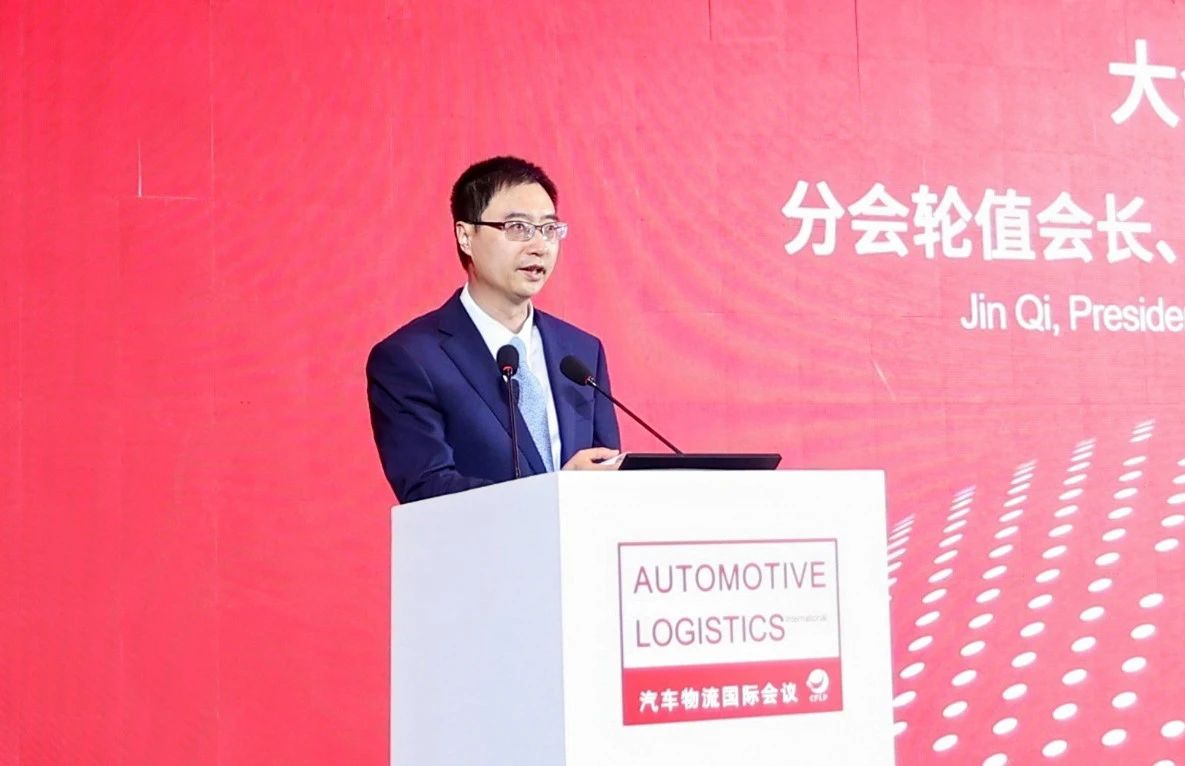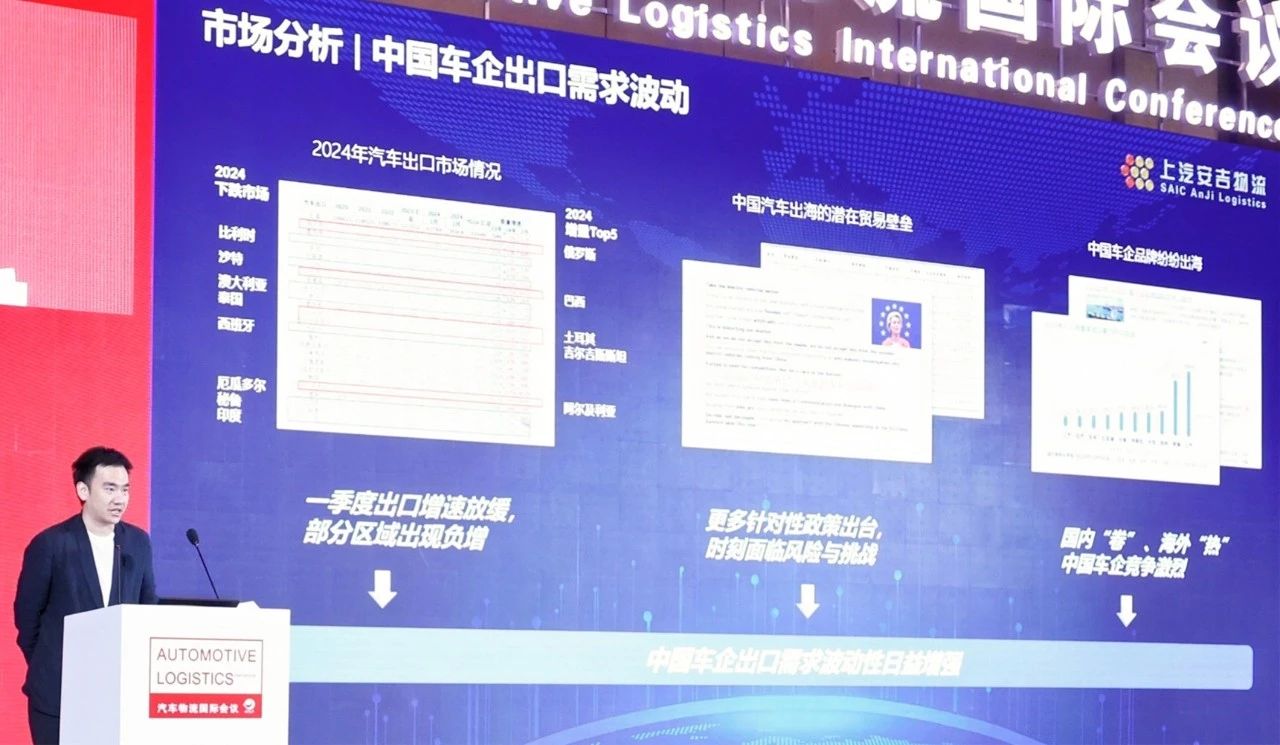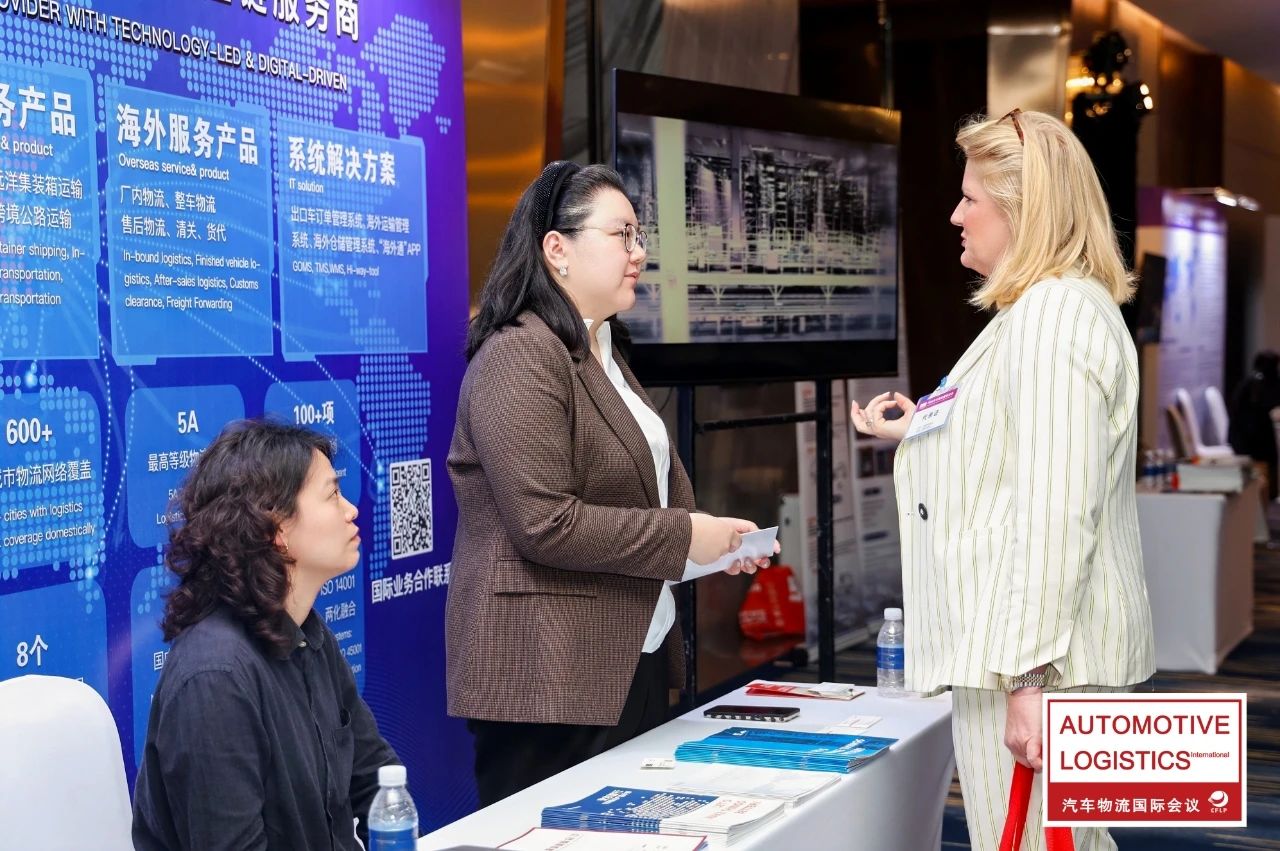On April 17, the 2024 Automotive Logistics International Conference, organized by the China Federation of Logistics and Purchasing, was held in Shanghai.
Representatives from major OEMs, parts manufacturers, supply chain industry, and foreign embassies and consulates in China gathered from around the world to discuss the current state, challenges and development trends of the automotive market, seeking solutions and cooperation for global automotive logistics.
Jin Qi, General Manager of SAIC Anji Logistics, along with Xin Jianmin, Deputy General Manager of SAIC Anji Logistics and President of International Business Group, and other relevant business leaders were present at the meeting.

During his formal address, Jin Qi, the rotating President of CALA, and General Manager of SAIC Anji Logistics, pointed out that currently, from new energy vehicles to the entire automotive market, and from domestic to international markets, Chinese automobile enterprises have engaged in fierce price wars.” Faced with significant challenge of cost pressure shifting towards the supply chain, automobile logistics enterprises must pursue utmost cost reduction, and simultaneously enhance operational efficiency. He suggested that automotive logistics enterprises adopt measures such as joint construction of air routes/ports, shipping volumes integration, etc., and work closely with OEMs and global logistics industry partners to improve service capability, operational efficiency, and resource control, and optimize end-to-end cost, thereby providing strong support for the export of domestically-made automobiles and achieving mutually beneficial development.

Shi Jun, Vice President of International Business Group at SAIC Anji Logistics and Deputy General Manager of Anji Shipping, addressed on the theme of "Going Global Together" as he delved into the current market situation, analyzing and summarizing the trends and challenges facing Chinese automobiles exports. Drawing upon the foundational capabilities and development status of SAIC Anji Logistics, he outlined strategies such as optimizing local-to-end chain operations, aggregating route resources, and proposed cooperation models to address the issues highlighted.

Outside the conference room, the SAIC Anji Logistics booth drew a large number of attendees eager to gain a deeper understanding of the company's international shipping routes and supply chain, as well as its domestic multi-modal transportation business, fostering discussions on potential collaborations.
As a significant force in the global automotive logistics industry, SAIC Anji Logistics will bravely shoulder its responsibilities, taking practical actions to promote deeper industry collaboration, achieve resource and end-to-end capability sharing, and provide safeguard for China's automobile export.







